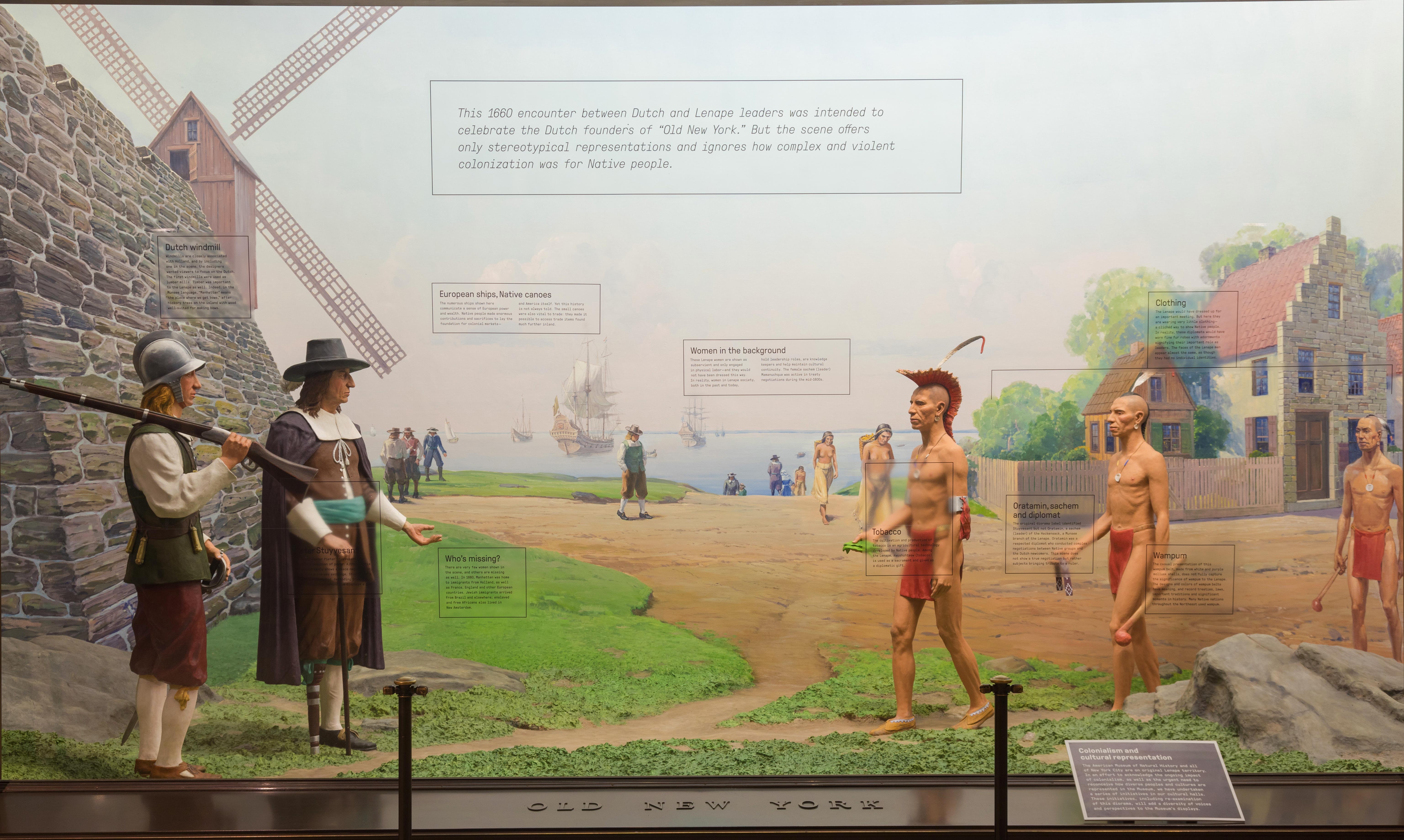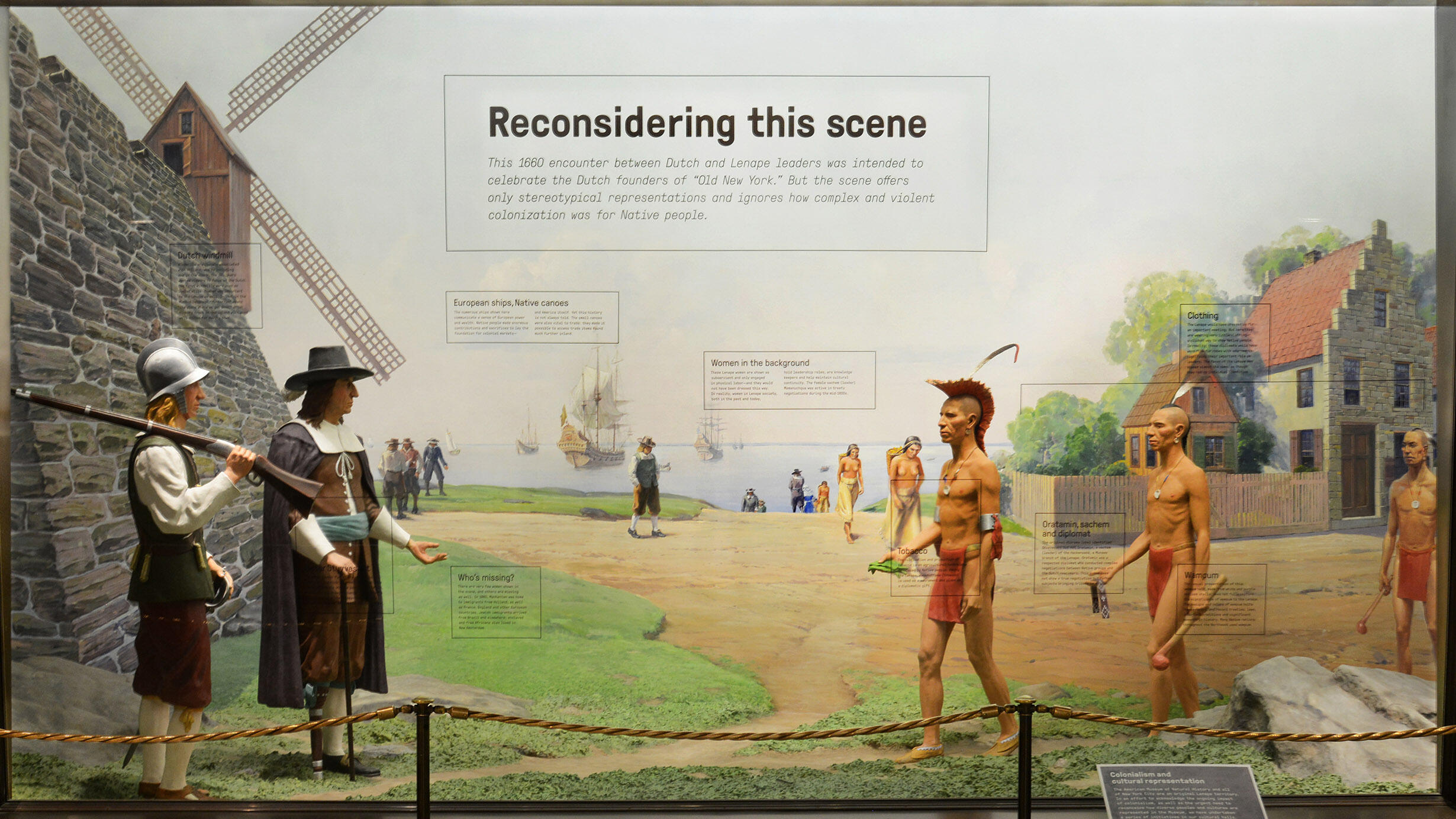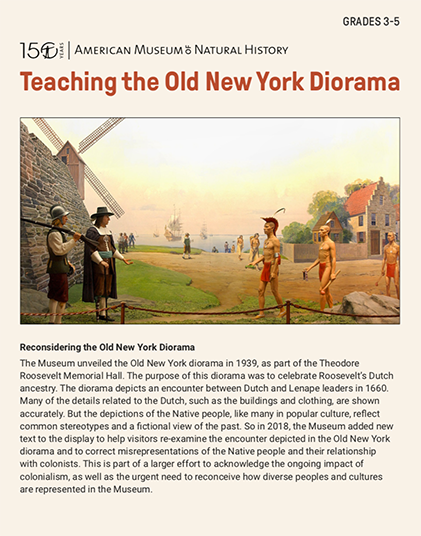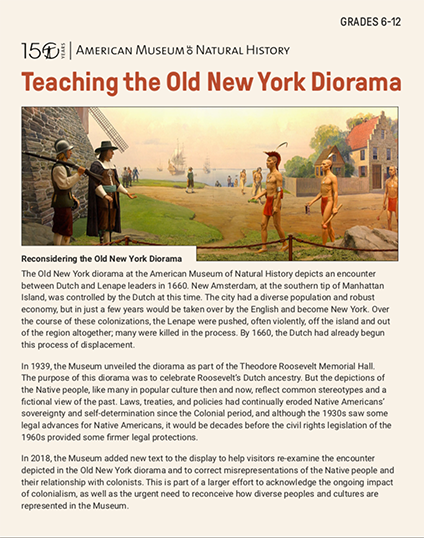European ships, Native canoes
The numerous ships shown here communicate a sense of European power and wealth. Native people made enormous contributions and sacrifices to lay the foundation for colonial markets—and America itself. Yet this history is not always told. The small canoes were also vital to trade: they made it possible to access trade items found much further inland.
Women in the background
These Lenape women are shown as subservient and only engaged in physical labor—and they would not have been dressed this way. In reality, women in Lenape society, both in the past and today, hold leadership roles, are knowledge keepers and help maintain cultural continuity. The female sachem (leader) Mamanuchqua was active in treaty negotiations during the mid-1600s.
Dutch windmill
Windmills are closely associated with Holland, and by including one in the scene, the designers wanted viewers to focus on the Dutch. The first windmills were used as lumber mills. Timber was important to the Lenape as well. Indeed, in the Munsee language, “Manhattan” means “the place where we get bows,” after hickory trees on the island with wood well-suited for making bows.
Who’s missing?
There are very few women shown in the scene, and others are missing as well. In 1660, Manhattan was home to immigrants from Holland, as well as France, England and other European countries. Jewish immigrants arrived from Brazil and elsewhere; enslaved and free Africans also lived in New Amsterdam.
Clothing
The Lenape would have dressed up for an important meeting. But here they are wearing very little clothing—a clichéd way to show Native people. In reality, these diplomats would have worn fine fur robes with adornments signifying their important role as leaders. The faces of the Lenape men appear almost the same, as though they had no individual identities.
Oratamin, sachem and diplomat
The original diorama label identified Stuyvesant but not Oratamin, a sachem (leader) of the Hackensack, a Munsee branch of the Lenape. Oratamin was a respected diplomat who conducted complex negotiations between Native groups and the Dutch newcomers. This scene does not show a true negotiation but rather subjects bringing tribute to a ruler.
Wampum
The casual presentation of this wampum belt, made from white and purple mollusk shells, does not fully capture the significance of wampum to the Lenape. The designs and colors of wampum belts have meaning, and record treaties, laws, important traditions and significant moments in history. Many Native nations throughout the Northeast used wampum
Colonialism and cultural representation
The American Museum of Natural History and all of New York City are on original Lenape territory. In an effort to acknowledge the ongoing impact of colonialism, as well as the urgent need to reconceive how diverse peoples and cultures are represented in the Museum, we have undertaken a series of initiatives in our cultural halls. These initiatives, including re-examination of this diorama, will add a diversity of voices and perspectives to the Museum’s displays.
Old New York Diorama
Part of Theodore Roosevelt Memorial.



